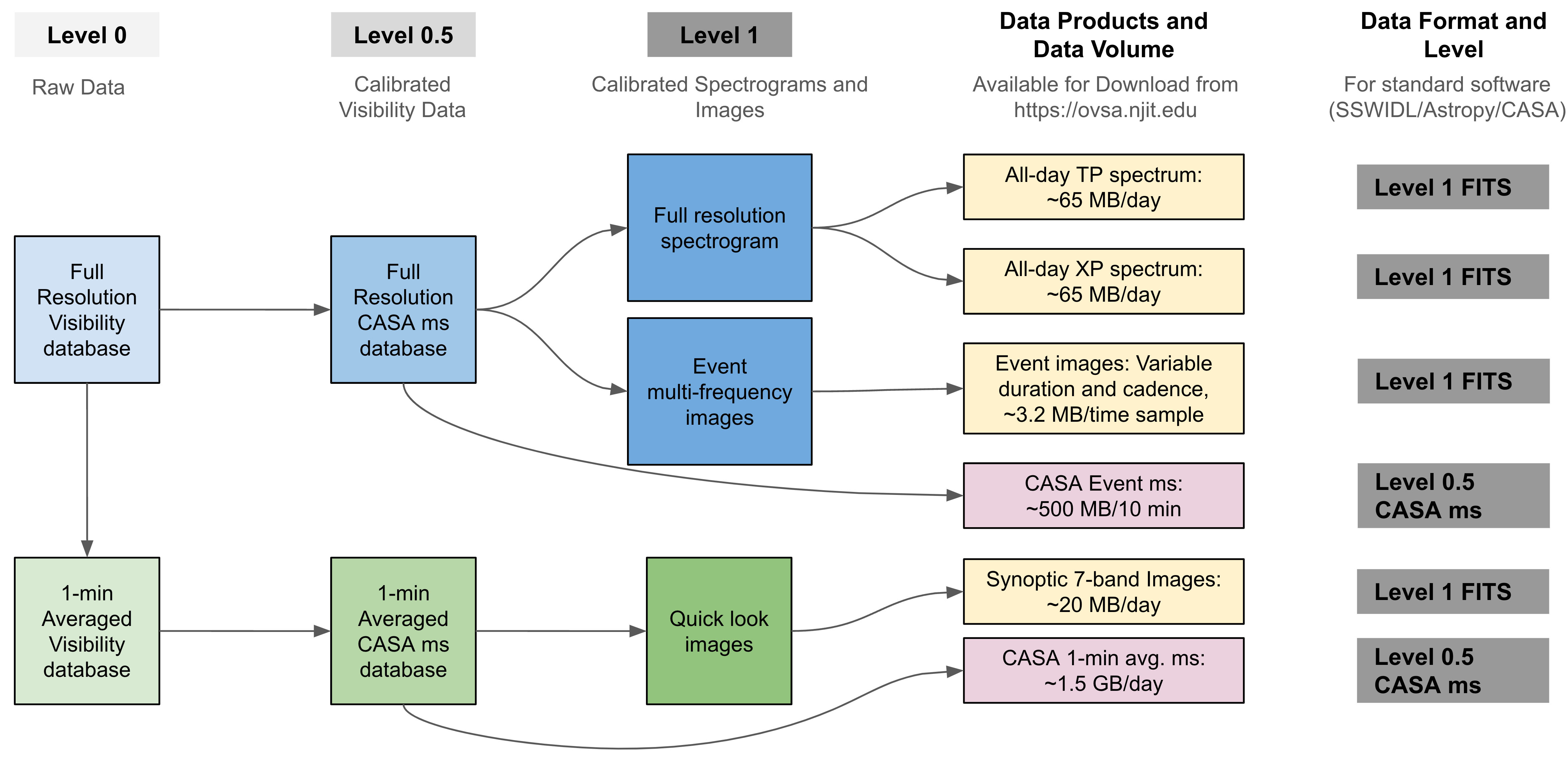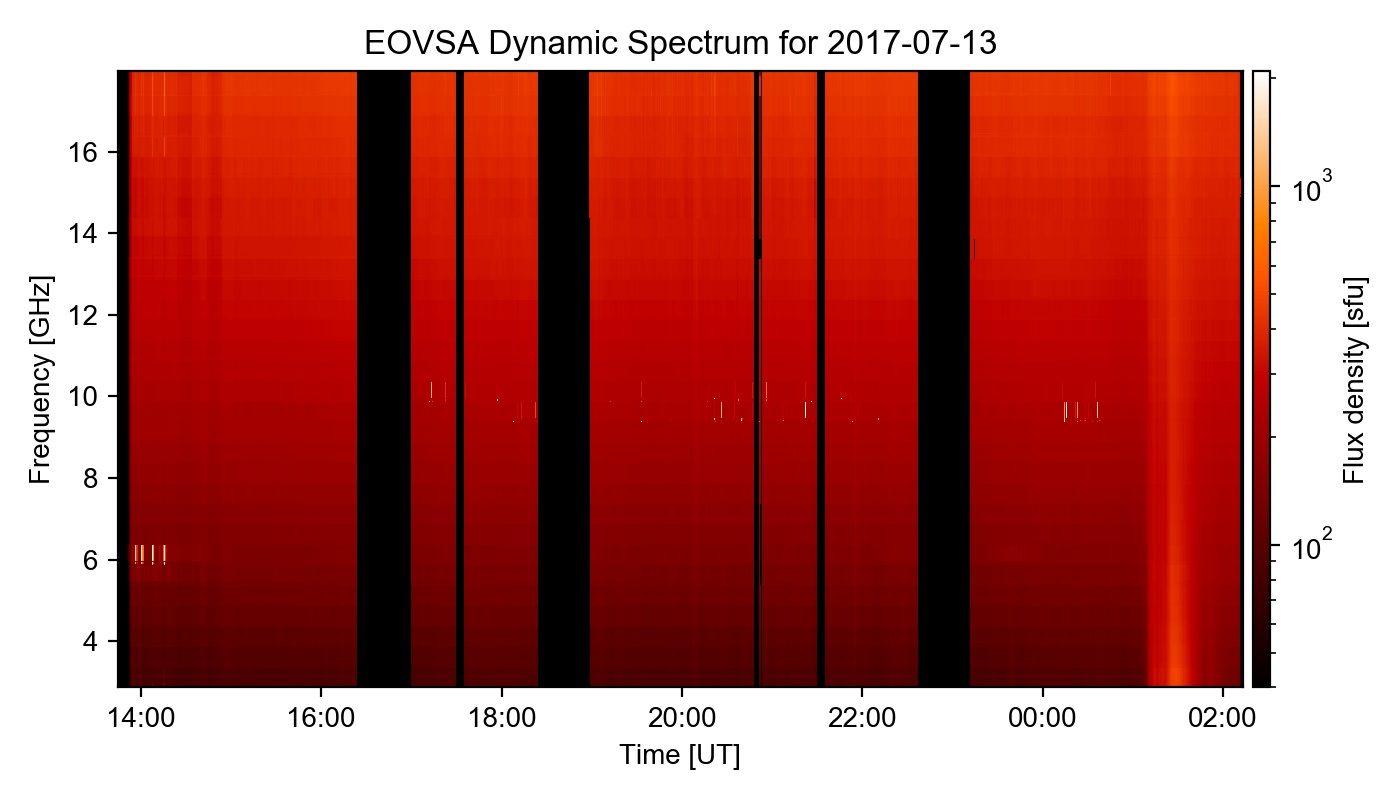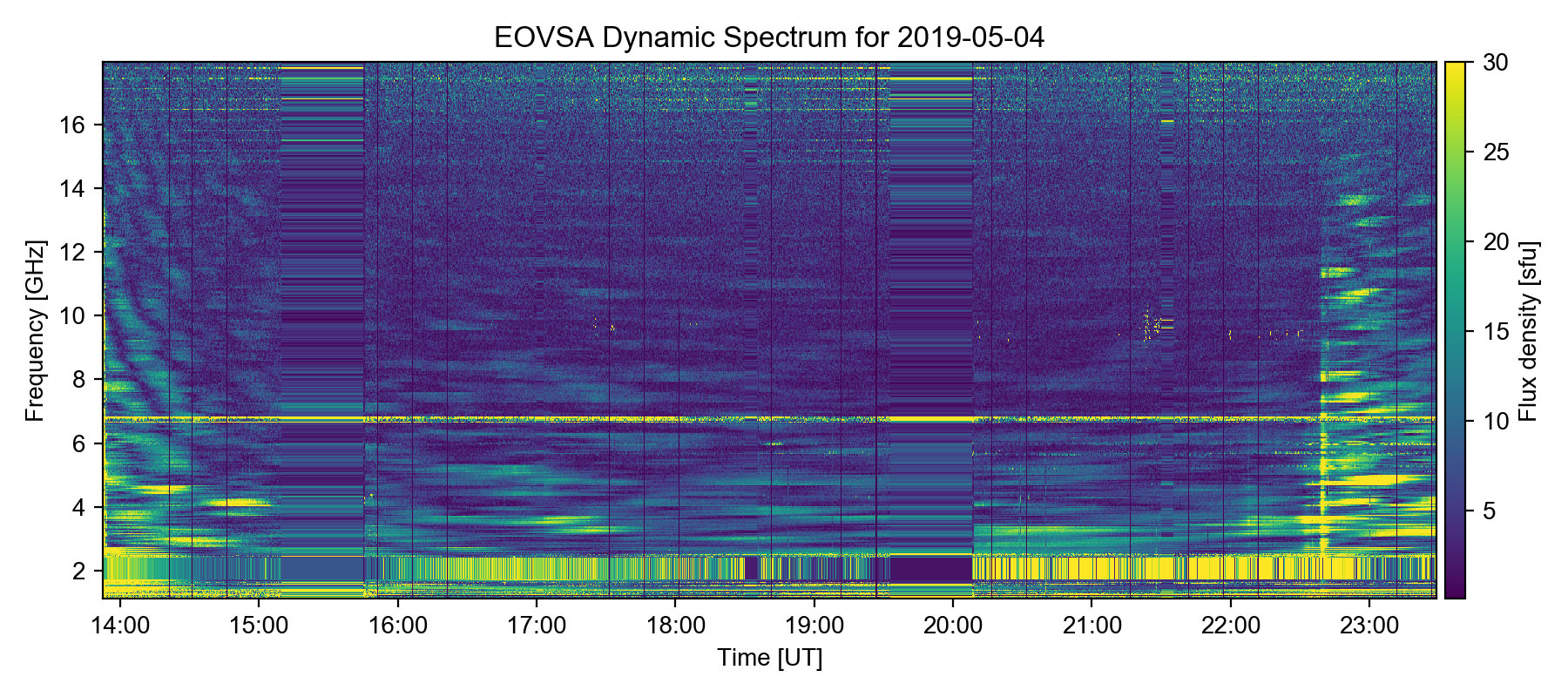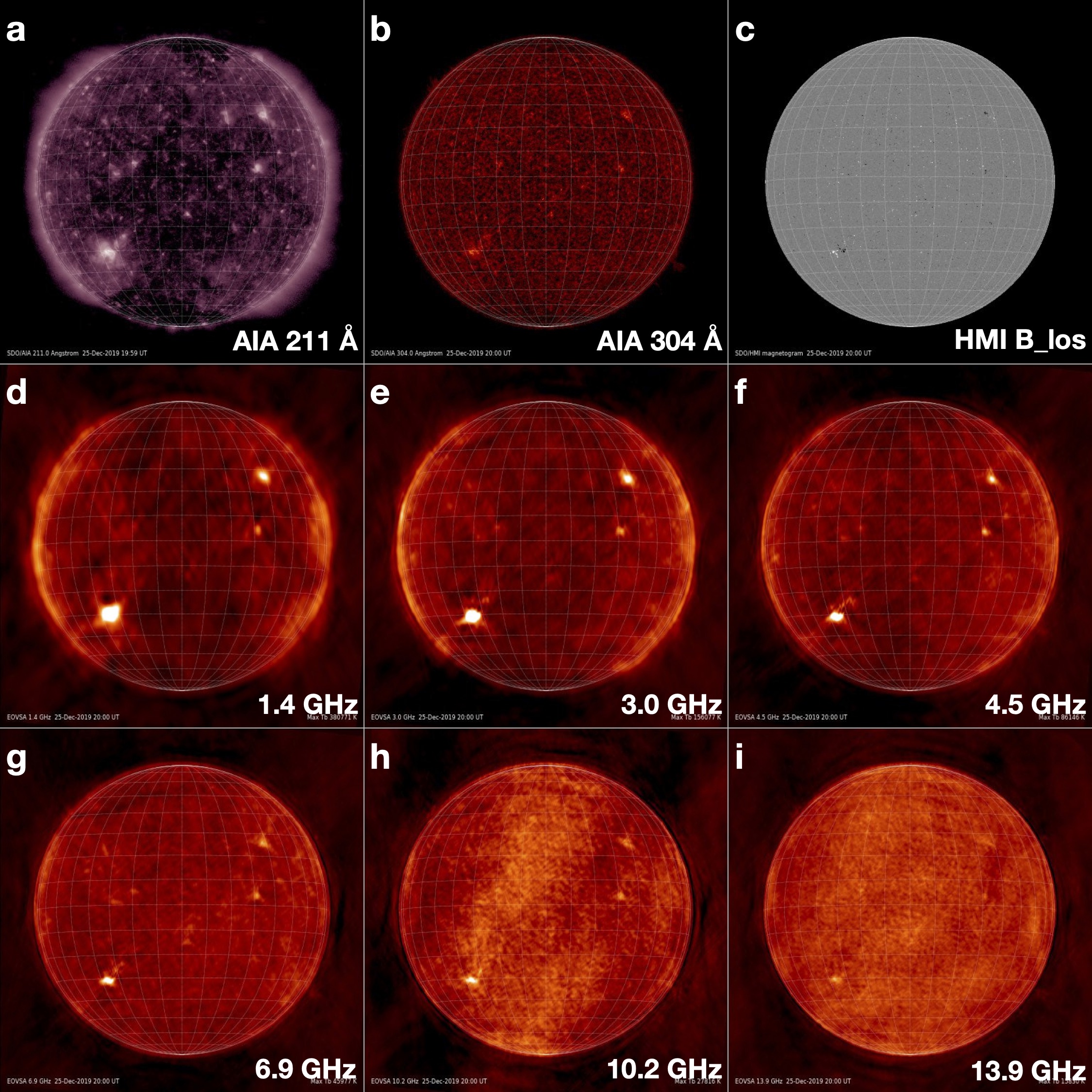EOVSA Data Products
Welcome to the EOVSA data products documentation. EOVSA observes the full disk of the Sun at all times when the Sun is >10 degrees above the local horizon, which is season dependent and ranges from 7-12 hours duration centered on 20 UT. During January, coverage will be 16-24 UT daily, 7 days/week. Like any radio interferometer, the fundamental measurement for imaging is the correlated amplitude and phase between each pair of antennas, which is called a “complex visibility.” EOVSA’s 13 antennas form 78 such visibilities at any frequency and instant of time, i.e. 78 measurements of the spatial Fourier transform of the solar brightness distribution. EOVSA records these visibilities at 451 science frequency channels each second, in four polarization products, as well as additional total flux measurements from each individual antenna. These data are then processed through a pipeline processing system (the block diagram in Figure 1 shows the data flow in the pipeline). One of the outputs of the pipeline is a visibility database in a widely used open-standard format called a CASA measurement set (or “ms”; CASA is the Common Astronomy Software Applications package used by many modern interferometer arrays). Many different CASA ms’s can be created from the raw visibility data by selecting time ranges, frequencies, integration times, polarizations, and so on. We provide a set of standard ms’s for each day (red boxes in Figure 1), for use by researchers who wish to start with visibility data, while the full-resolution, raw visibility data are made available through links (TBD) to our server.
Most users, however, will prefer to work with spectrogram (frequency-time) and image data, which are also outputs of the pipeline system shown in Figure 1 (orange boxes). Spectrograms are provided as standard FITS tables containing the frequency list, list of times, and data in both total power and a sum of amplitudes over intermediate-length baselines (cross power). Likewise, image data products are in FITS format with standard keywords and are converted into the Helioprojective Cartesian coordinate system compatible with the World Coordinate System (WCS) convention, along with correct registration for the spatial, spectral, and temporal coordinates. Both the spectrogram and image data products will be calibrated properly and have physical radio intensity units (sfu for spectrograms and brightness temperature for radio images).
We deliver the radio interferometry data on the following three levels:
Level 0 - Raw visibility data from the instrument
As outlined in Figure 1, the real-time pipeline creates raw data products in the left-hand column labeled Level 0. This in cludes observations of cosmic sources for phase calibration, and gain and pointing observations required for total power calibration.
Level 1 - calibrated visibility data
After applying calibration and other preliminary processing to level 0 data, we create the CASA ms’s in the second column in Figure 1, labeled Level 1. These are used to create images and spectra in physical units in the third column, labeled Level 2.
CASA 1-min averaged ms
EOVSA 1-min averaged visibility data in CASA ms format can be retrieved from the following page:
http://www.ovsa.njit.edu/fits/UDBms_slfcaled
CASA Event ms
TBD
Level 2 - Images and spectrogram data in standard FITS format
Getting level 2 data
EOVSA Level 2 data products can be retrieved from the "synoptic data" page:
http://www.ovsa.njit.edu/fits/synoptic
Example - get the synoptic data on December 25, 2019
- go to EOVSA browser page.
- Browse to December 25, 2019.
- Click "synoptic fits" button next to the calendar tool.
- Select the data product you want to download based on the name in the following list.
List of Level 2 data products
| category | data product | name |
|---|---|---|
| Dynamic Spectrum | All-day TP spectrum | EOVSA_TPall_yyyymmdd.fts |
| All-day XP spectrum | EOVSA_XPall_yyyymmdd.fts | |
| Image | ||
| Synoptic 1.4 GHz image | eovsa_20191225.spw00-01.tb.disk.fits | |
| Synoptic 3.0 GHz image | eovsa_20191225.spw02-05.tb.disk.fits | |
| Synoptic 4.5 GHz image | eovsa_20191225.spw06-10.tb.disk.fits | |
| Synoptic 6.8 GHz image | eovsa_20191225.spw11-20.tb.disk.fits | |
| Synoptic 10.2 GHz image | eovsa_20191225.spw21-30.tb.disk.fits | |
| Synoptic 13.9 GHz image | eovsa_20191225.spw31-43.tb.disk.fits |
Reading level 2 data
Software
All-day TP spectrum
Daily total power full-Sun-integrated spectrogram calibrated in solar flux units are provided at 451 frequencies and 1 s time resolution.
from suncasa.eovsa import eovsa_dspec as ds ## define the dynamic spectrum file. tpfits = 'EOVSA_TPall_20191225.fts' ## display the dynamic spectrum. ds.dspec(tpfits)
All-day XP spectrum
Daily cross power spectrogram (mean flux from baselines with "intermediate" lengths) calibrated in solar flux units are provided at 451 frequencies and 1 s time resolution. XP spectrogram has much better sensitivity to weak bursts.
from suncasa.eovsa import eovsa_dspec as ds ## define the dynamic spectrum file. tpfits = 'EOVSA_XPall_20191225.fts' ## display the dynamic spectrum. ds.dspec(tpfits)
Synoptic 6-band Images
Full disk images at 6 selected frequency bands centered at 1.4, 3.0, 4.5, 6.8, 10.2, and 13.9 GHz are provided once per day, calibrated in brightness temperature.



